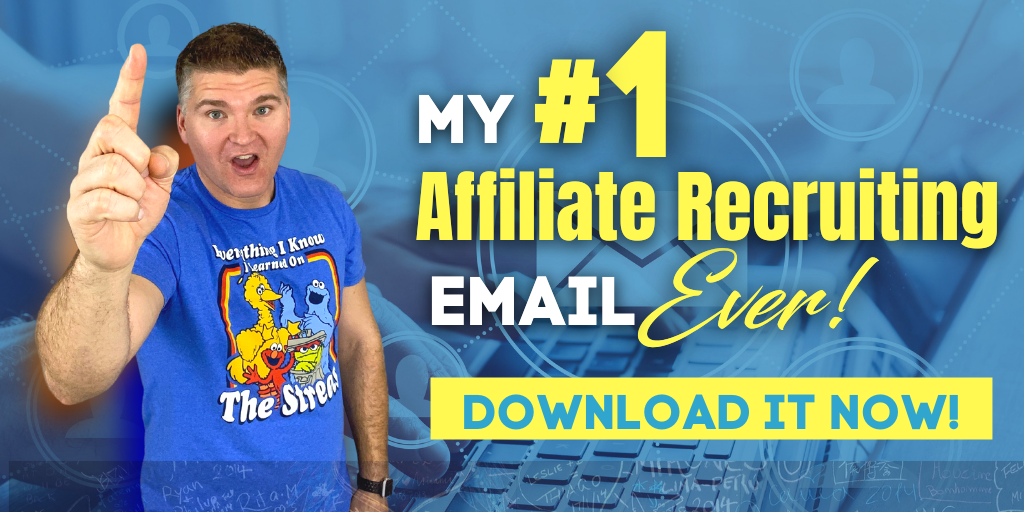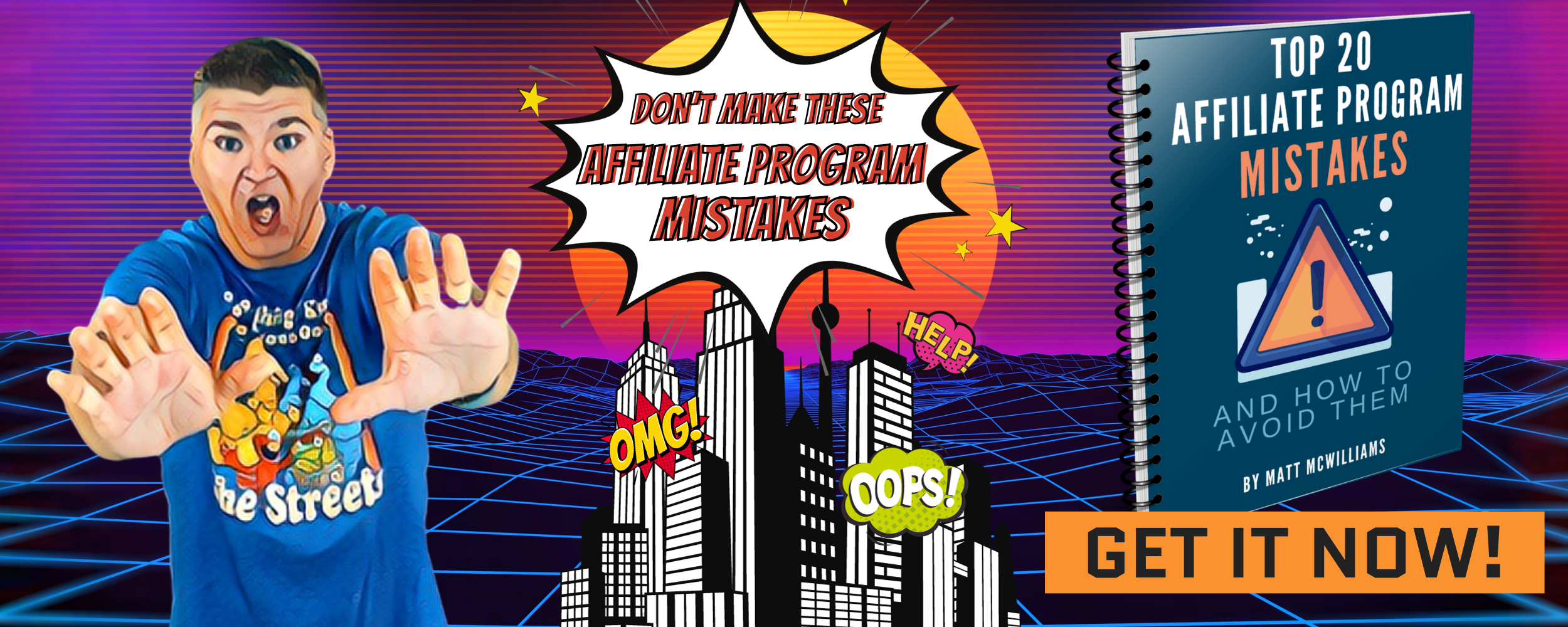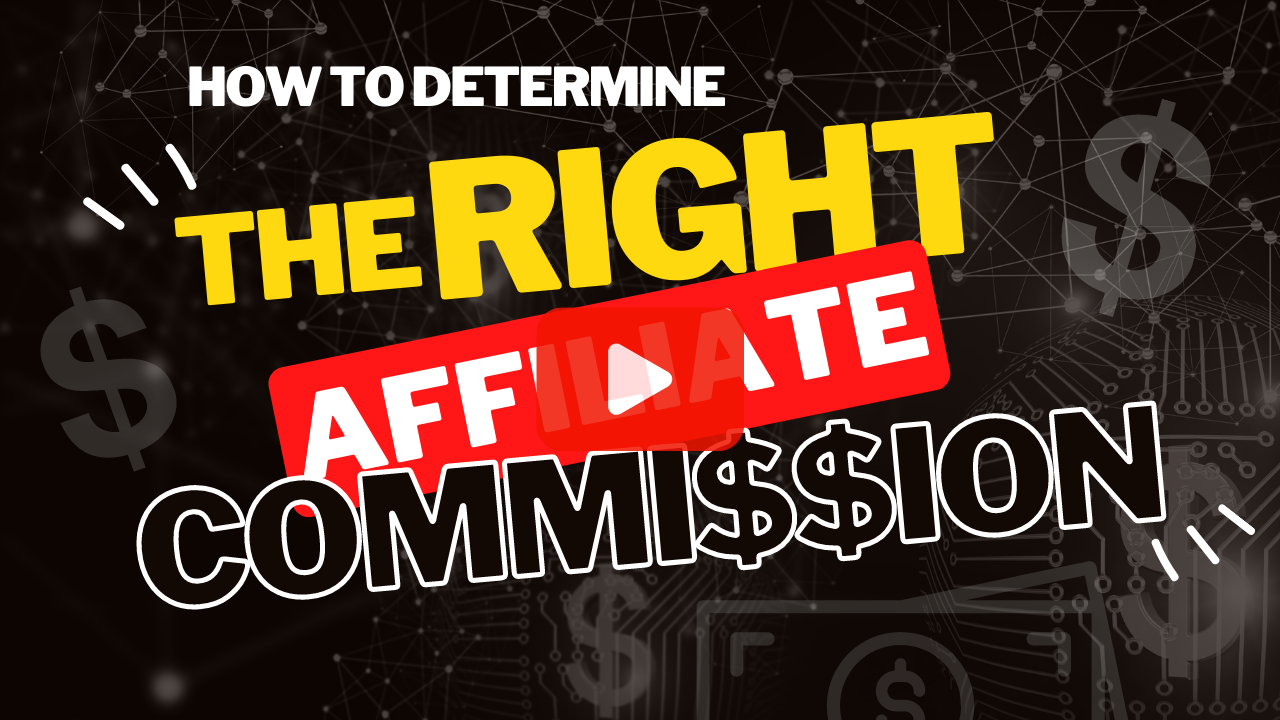What can YOU do to motivate your affiliates to sell more? Are there certain strategies and tactics you can use to actually move the needle and get your affiliates to perform at a higher level? The short answer is YES and in today’s episode, I’ll reveal the seven proven strategies that I’ve used time and time again to motivate affiliates to make more sales.
Click Here for The Written Transcript of This Episode
Get my #1 affiliate recruiting email (the one I’ve personally used to recruit thousands of affiliates in dozens of niches). Grab your copy here!
LINKS MENTIONED IN THIS EPISODE
How to Use Affiliate Leaderboards to Skyrocket Your Sales
How to Ask Affiliates ro Promote More
Text me at 260-217-4619
Don’t Miss An Episode – Subscribe Below
Previous Episodes of The Affiliate Guy
How to Double Your Affiliate Program in 90 Days
How to Start an Affiliate Program: The First 30 Days
How to Avoid the Most Common Affiliate Marketing Mistakes
Why Your Affiliate Program is Failing (And What to Do About It)
How to Build Strong Relationships with Your Affiliates
How to Motivate Your Affiliates to Sell More
What can you do to motivate your affiliates to sell more? Are there certain strategies and tactics that you can use to actually move the needle and get your affiliates to perform at a higher level? The short answer is yes.
And in today’s episode, I’m going to reveal the seven proven strategies that I’ve used time and time again to motivate affiliates to make more sales. You welcome to the affiliate, guy. Podcast.
If you want to grow your income, serve your tribe, and enjoy all the benefits of affiliate marketing and having your own affiliates, you’re in the right place. Thanks for joining me today. Let’s get started.
So affiliate motivation is one of those topics that you can find no shortage of information on, right? There is so much information. You could Google this and find a ton of things.
Actually, I think all but one or two of which I’m going to talk about today. But here’s the thing. You’re going to find 50 things if you search.
Most of it is either based on theory or generalities. A lot of it’s true. As I said, if you Google affiliate motivation, you’re going to find plenty of good information, but you’re also going to find a lot of stuff that barely moves the needle, and you might even find a few things that actually could have a negative effect.
And so what I wanted to do is base this episode on my own trial and error. I’ve worked with more than 50 affiliate programs, and more than a dozen different niches, from Internet marketing to parenting, to health and fitness, to finance multiple product types, from digital courses to coaching to books, to physical products to memberships, you name it, right? All different sizes, from startups to million-dollar programs to programs in excess of $300 million.
And what I am sharing today are the seven strategies that have worked over and over and over again in every single niche, product type, and program size. And yes, we ended up with seven. And that is the magic marketing number, right?
How convenient. Are there really only seven? Are there actually seven?
It turns out yes. It turns out yes. Like, if there had only been six, this would be six.
If there were eight, there’d be eight. But there are seven over time. I’ve documented the different levers and there are hundreds of levers you can pull to motivate affiliates.
I want to know which of the levers, which things can you do that actually motivate them? And then I measured what actually happened in terms of sales increases. Some of the strategies, I tried them.
Maybe I saw somebody else do it and it didn’t work. I just saw somebody else do it. I didn’t know if it worked or not for them, even.
Because sometimes we try things that we come up with and you might see us do them and it turns out they don’t work. Guess what? We’re never doing it again.
Or we’re going to make a major tweak. But some of these things, it was obvious they didn’t work. Some of them, admittedly, were so unsuccessful I maybe tried them like two times and decided they did not work.
That’s my only disclaimer, really. Like otherwise. What I’m about to share with you is documented and empirical.
Others took longer to measure. Some worked at first and they stopped working a few years ago. Some worked in most niches, but not all.
Some worked when a program had only 50 affiliates, but they weren’t scalable. Some worked in the 2000s, but they didn’t work ten years later. These strategies have stood the test of time.
These strategies worked the first time I tried them, and they’ve worked ever since. These are the seven strategies we go back to every single time they’re proven. There are dozens of strategies that worked 70%, 80%, even 90% effective.
They’ve worked in almost every single niche, almost every single situation. But not all. And I’m not suggesting to never try them in your niche.
Like you can Google search, look on my site for other podcast episodes and articles about motivating your affiliates. But if all you have are these seven and you consistently go back to them time and time again, you will be successful. These are the seven.
I guarantee you, if you do these seven and do nothing else, you will be successful. We’ve innovated things. I’ve talked about things, we’ve innovated aspects of these things like live leaderboards and stuff.
And then that worked. We’ll talk about that later. But a lot of the innovations we did, they didn’t really move the needle a lot.
Or they maybe worked in 10% of the niches. So what are they? What are these seven things?
Well, first I want to talk about a few common ones that generally work, but they do not work in every situation. Okay? It’s important to know how we kind of got to these seven.
The first one that works a lot of times, but not in every situation are coupons. Some niches just don’t support discounts. Plus, if you’ve got a premium product, you don’t want a discount.
You have to have a coupon code field which can actually decrease conversions. And so overall, they work, but not in every single niche. We found that coupons work in probably 60% to 70% of niches, very common in retail niches and lower priced products.
I’m not saying not to use coupons. It did not pass the test of has. It worked in every single one of the 50 plus programs that I’ve run.
The second one you’ll find a lot if you Google this. Google how to motivate affiliates. Random bonuses.
So for instance, every 100 sale you get a bonus or we’re going to randomly just pay an affiliate. It could literally be like every 100 sale across the program. Here’s the thing.
There’s no action tied to the outcome, so there’s nothing to reinforce. Bonuses must act as a reinforcement to specific behaviors and results, which we will talk about later. So random bonuses, I’ve personally never seen them work, but they could.
The third one is paying more frequently. I talked about this probably a year ago. Again, this works in some niches.
Some niches which have a large capital outlay on the front end. Maybe if people are going to run a lot of ads or things like that, it does move the needle. But in about half of the niches that we’ve worked in, half of the programs we worked in, it had no impact.
We could pay daily, weekly, whatever, as long as you’re paying on a reasonable schedule. And we feel like reasonable is the first week of the month following the end of the return period. So, in other words, to make that simple, if a sale is made in August, we pay the first week of October and we pay consistently.
We talked about this a few episodes ago. We pay on time every time. We don’t sometimes pay in the third week and then sometimes maybe pay before the month.
On September 30, we pay. No, you are going to get a payment from us on the first or second business day of October for your sales in August, for your sales in September. You’re going to get a payment on the first or second business day of November for your sales from March.
You’re going to get a payment on the first or second business day of May. Not the fifth business day, not the 10th, not the last day of April. But we’re going to be consistent.
And just as a side note, if anything ever prohibits us, we even had this with all but one we had this with one affiliate program ever, where there were some issues. They were out of the country, meaning the company is based out of the country and they had issues with their bank and they really could not pay affiliates. We were having to move such small amounts of money that we had to pay like five affiliates and then we’d have to wait 48 hours and pay another two affiliates.
And we were doing our best. So we were having calls with affiliates to say some of the bigger ones that pay them, like even much later. And it was just a mess.
But we communicated and it wasn’t that big of a deal. As far as things didn’t never work, I’ll tell you this, negative motivation and threats, if you don’t make a sale by the end of the month, we’re going to remove you from the program. Doesn’t motivate anybody.
Doesn’t motivate anybody. So negative motivation, threats of removal and things like that, threats of lowering commissions don’t work. And again, everything I’m about to share in terms of what does work, they’re rooted in the basics.
And I’m going to make the assumption that you are following best practices in your affiliate program. So you’re maintaining frequent open communication. None of these seven work if you’re only emailing your affiliate twice a quarter.
None of these things work if you go two months without communicating with them. None of these things work if you’re not open in your communication and honest. So I’m assuming you’re doing that.
I’m assuming that you’re developing relationships with your affiliates. I’m assuming that you’re continually recruiting new affiliates. I’m assuming that you have good commissions and competitive commissions.
You have good conversions. I’m assuming what we just talked about, that you’re paying on time every time. So to be clear, without those, nothing I’m about to share will work.
You’ve got to get your basics down first. Again, weekly communication at a minimum. If you’re a once a year launch, then you’re probably looking more at we’ve talked about this before every two to three weeks during the off the non peak times, and you got to continue to develop those closer relationships and recruit new ones.
You can’t pay an uncompetitive commission or have low conversions and expect any of this to work. And, of course, pay on time every time. So with that said, what are those seven things?
What are the seven levers that we can pull that work every time to motivate affiliates to sell more? The first one is co branding. Co branding has worked 100% of the time, adding a little something to the landing page specifically for the affiliate.
So taking a moment to add a logo and maybe some text altering the colors. Usually this does not take long, and it is 100% effective at increasing sales every time. We have ever done this for an affiliate, and we’ve done it literally over a thousand times, it has increased sales with that affiliate.
Need help activating your affiliates? Use my proven email templates for getting inactive affiliates in the game and making sales! Get them here!
I’ll talk about the data a little bit, but I mean, every time we’ve done this, we’ve got at least a 15% increase in sales.
So it’s as simple as often just saying welcome, so and so. Visit people from so and so. Welcome fans of so and so.
If their tribe has a name, if it’s somebody know. You got like John Lee Dumas. His community is Fire Nation.
Welcome fire nation. Put a little EO Fire logo on there. Boom, boom, boom.
That stuff works. Having custom promotional graphics where you actually, again, create graphics that are in their colors and have their fonts and their vibe, that works. It could be as simple as just a quick tweak to a landing page.
Typically, I know what we do is we create a model for that page that we can easily clone and tweak the colors. We did recently for an affiliate for one of our clients. And all we did was take this pink shade that kind of was a little bit more feminine.
Her audience is 80% female, but this particular affiliate was about 70, 80% male. And we just made the page more neutral. So we took this pink and we used their shade of blue instead.
It was a perfect swap. We threw his logo on, welcomed his visitors, and then we had a quote from him recommending the thing with his picture. I mean, it took maybe ten minutes.
Ten minutes for a 20, possibly 25% increase in conversions. You can’t tell me that’s not worth it. There’s nothing else you can do in ten minutes to increase your conversions that much.
Custom coupon codes. Now, I know I said coupons don’t always work. Custom coupon codes do.
If again, this is under the co branding banner here. If you use coupons, custom coupon codes typically will increase sales 15% to 20%. So all that means is instead of giving you the coupon code, let’s say we’re going to do 20% off for March instead of March 20.
Coupon code March 20. We’ll go back to JLD. Don Lee Dumas from EO fire.
EO fire 20. Use coupon code EO Fire 20 to save 20% off. Not only does this improve conversions, but it increases the likelihood that they share and how often they share.
Co branding increases conversions. That makes sense. So if I send 200 people and typically I convert 100, I’ll convert 110.
But here’s the thing, I’m probably going to send more than 200 and I’m going to send those people instead of once a year, I’m going to send them twice a year. Those added up could triple or more the number of sales. Like I said, every single time we’ve done this with an affiliate, we got at least a 15% increase in sales.
That’s on the low end. And for somebody that’s already sending $10,000 a month to now send 1150 a month, the mathema was a 15 grand a year extra. What else can you do in your business to move sales $15,000?
What else can you do in your business in ten minutes to move sales $1,500? Probably not a whole lot. So this absolutely works.
The second thing that always works to motivate affiliates to somewhere is to train them, to teach them to share some strategies and tips with them. As an affiliate manager, one of the most important tasks you need to do is helping affiliates to buy into your vision, to buy into the vision of the company, the mission of the company. And that’s not something that’s just going to happen on its own.
So that’s part of the training, is sharing that vision. You also want to share what works in terms of getting more traffic, better conversions, what works for sales, what are the important dates to know your primary role is to assist them in getting those leads and sales. For example, when we trained Jeff Walker’s Affiliates a couple of years ago, all we did was we showed them how to go from five to twelve sales.
That was it. That doesn’t sound like a lot, but when you multiply that times 100 affiliates, that’s a big deal. If the average affiliate was making five and they went to seven, cross 100 affiliates, that’s 200 additional sales.
That’s nearly a half a million dollars. And a lot of this starts with the right mindset and understanding the mindset behind promotions and how promoting serves your audience and how not to be afraid of unsubscribes. But also what are the proven tactics, what actually makes a difference.
So helping them with things like product knowledge, making sure your affiliates have a deep understanding of the products and services that you want them to promote. That way you can ensure that they’re going to accurately represent your products, your offerings, your brand, maybe even address some potential customer questions and concerns on the front end brand consistency. You want to make sure that everybody that’s promoting you is on brand.
Just making sure that you train them on promotional tactics and compliance. We’ve talked about the FTC rules. You need to make sure that you are training them on those things, that you’re training them on, what marketing strategies are working, what tools that they need, sharing tips and tricks with them.
And then obviously this will tie into something we’ll talk about in a little bit. These trainings create a sense of community. They create a sense of community.
So if you want to take a look behind the scenes at how to train your affiliates, put a link in the show notes. You can watch the training and see how I did it. We’re also going to give you a couple of templates.
You can use some slides, all kinds of other stuff. Just make sure you go to the link in the show notes. It’ll say like, Affiliate training package or something like that.
It’s totally free and you can download all this stuff. You can take the slides. I think they’re in PowerPoint.
Google slides and Keynote, something like that. Maybe just PowerPoint and keynote. You can take them, throw your logo on it, and I’m giving you permission to use them on your own.
Don’t tell my stories. I tell some stories in the slides. Don’t tell my stories and pass them off as your own.
But you can say, hey, I remember hearing once from Matt McWilliams, blah, blah, blah. These work. These absolutely work.
So whether it’s one time or ongoing live trainings are great. Doing them live, can you build that community? You can just talk and teach.
I do sometimes when we’re prepping with a client that has a lot of new affiliates. And these are people, quite frankly, who sometimes have big lists. These are people who make over $100,000 in sales, but they’re new to doing affiliate promotions.
They know marketing. They’re just new to affiliate stuff. We’ll do office hours with them where once a week we’ll get together for an hour.
I’ll have a topic that I’m going to train on for 30 minutes, like how to promote the webinar, how to warm up your audience, or how to close more sales. And then we’ll have like 30 minutes of Q and A. And these work great.
But you can also just send tips in email or in a Facebook group, which we’ll talk about in a little bit. Feel free to steal my stuff. Like, as long as you link to me, I don’t care.
You can copy word for word and then just say at the end, like, I got this from Matt McWilliams. Here’s the link to his article. Or quote a part of it and just share the link.
I don’t mind that. It’s totally cool. But every time we’ve trained affiliates, whether it be in the form of an actual training or ongoing tips, we notice a lift in sales.
So it absolutely has worked 100% of the time. The third thing that works 100% of the time is targeted commission increases and bonuses. Notice I said targeted, not random, not across the board, but these are things like tiered increases.
So if you hit a certain number, you get a bonus. Bonuses and commission increases for certain products or categories. Personalized offers.
Yeah, I’ve shared this so many times, but I want to make it clear this is one that works, is simply reaching out to somebody and finding those affiliates. Talked about this in the last episode. We talked about how to double your affiliate program in 90 days.
And I said I would look for those affiliates who were down year over year in a quarter, and then I would find what was their number last year, that same quarter. So if they’re on pace, let’s say last quarter they did 100 sales this year, but last year they did 150. So they’re down 33%, basically.
I think the math is right on that. Yeah, they’re down 33% this quarter. Last year they did also 150 sales.
Let’s make it easy for them and we say, hey, if you hit 150, sales. We’re going to give you a $20,000 bonus or whatever the number is, whatever makes sense for you. Financially, that’s a personalized offer.
You’re not offering everybody who hits 150 sales because some people will hit 150 sales no matter what. Why would you offer them $20,000? That doesn’t make any sense.
So these targeted commission increases, it doesn’t even have to be a $20,000 bonus. You could say, hey, if you hit 150 this month, then next quarter we’re going to give you whatever bump we’re going to take you from a 40% commission to a 50% commission. And that could be worth this amount of money.
Don’t make the same mistakes I’ve made with my affiliate programs. Learn my top 20 affiliate program mistakes…and how to avoid them!
On average, these are typically good for a 30% to 40% increase in sales. They work 100% of the time. I have never had anybody who went down in sales when we gave them a targeted commission increase or a targeted bonus.
The one exception to that were things that were beyond our control, where maybe an affiliate we have had a couple of times where we offered these and then their email account got shut down again. I’ve offered these probably 4000 times over the years, maybe more. In one or two times we’ve had something like that happen.
Outside of that, it has worked 100% of the time.
The fourth thing that works every time to motivate affiliates is some sort of an affiliate community. We talked about this earlier, like a Facebook group or some other group, and I’ve personally found Facebook groups. As much as I hate them, I got to be honest.
I hate them for so many reasons. I hate them because I got to go in to post in an affiliate group. As an affiliate manager, I got to go into the affiliate group, and I go to Facebook to post to the affiliate group, and then I see something from my mom, and I see that old friend I had back in college, and then next thing you know, there’s an ad that’s perfectly targeted toward me.
So I click on it, and now I’m going down that rabbit trail, and I forgot, and then I leave because I’m like, okay, I’m done. Shoot. I never posted on in that Facebook group, so I hate it.
But they work best because people are there, and so why do they work? Well, for one, we can introduce competition, which works in most niches. That not every niche.
Not every niche, but in almost every niche, competition works. In fact, we’ll talk about here in just a little bit, leaderboards. We’re going to talk about leaderboards because leaderboards, even though you say, well, that’s competition.
No, in and of itself, a leaderboard isn’t necessarily competition, although it kind of is. They work in every single niche, but it’s also community. People share what works.
Every time we’ve ever done a good Facebook group in a launch, for example, somebody has posted a helpful tip. Somebody has posted something that turned out to be really like, something that we’ve stolen. Like, that’s a good strategy.
I remember years ago, we ran Michael Hyatt’s five Days to your best year ever launch, and Jeff Walker posted in there with this long thread. It was a comment to somebody else’s thing. I’m talking on a 24 inch monitor, was two scrolls down this long comment.
This was a master class in how to promote an affiliate offer. This was gold from the guy who ended up winning the launch, one of the best marketers of our lifetime. This is brilliant.
And he posted that in there. And I remember thinking, okay, what is that worth? Like, what would you pay to basically have gotten Jeff to write a 2025 minutes thing like that?
That’s free coaching for everybody in that community. That lifted sales. There is no doubt that lifted sales.
That one comment produced some amount of increase in sales, and it motivated, just based on the comments, dozens of affiliates. It was priceless. But it becomes a community.
It becomes a communication outlet. That’s important. It’s important to have another way to communicate, because you’ve got email, you’ve got text, you’ve got all those things, but you’ve got the Facebook group, which is a really easy way to reach ten or 20% of your probably more like 40% of your top affiliates really, really fast.
So how can I measure, like, how do I actually know that this works? Because we have noticed a direct correlation between increases in sales and having a community and those affiliates who are not in the group, when we have a group, the affiliates who are not in the group count for less than 5% of total sales on average. It absolutely works for so many reasons.
Again, the ability to communicate, the ability to build that community, the ability for them to share what works and encourage each other and even do a little trash talk, which certainly works in a positive way. That public trash talk, so to speak. Again, just competitive people, that it’s healthy.
But if that’s not good for your niche, then focus on sharing what works and encouraging each other and things like that. Focus on the community side, but it works either way. So targeted commission, increases and bonuses, affiliate community.
We talked about co branding and training. Number five is events. Some sort of time bound event.
I don’t care if it’s a launch, a Summit, a sale, a challenge, a webinar, some sort of time bound event. They work every time to motivate affiliates because it’s a binary decision on whether or not you’re going to promote this event. It is yes or no, you are going to promote or you are not.
There’s no, like iffiness I’ll get around to it, I’ll promote it later. No, this event, this Summit, takes place October 1 through 10th. If you do not promote it before October 4, you’re not going to promote it.
You have a week and a half to promote it. Go. And it works every time.
Now, events are short term, but they lead this thing I love about them, they lead to a long tail effect. So if we have, and this is easy math here, but let’s just say all twelve months of the year for our product are consistent sales, we do $100,000 through the affiliate program each month. Easy round number, right?
We did 100,000 in June, 100,000 in July, 100,000 in August, 100,000 in September, and in October we do a Summit. And the promotion for that starts October 1 runs through October 10. The Summit is the 10th through the 20th.
Obviously we have an increase in October, and let’s just say in October we now do 175,000. We do an extra 75,000 through the Summit. In November, we’ll do 110, 120.
December 110, 120, we’ll just go with 120. We’ll do 120,000. We’ve increased by 20% over pre Summit, and then that becomes the new norm.
And then in March we do a challenge. We do $200,000. That’s in March, but in April we’ll do 130.
In May we’ll do 130. And again, it’s not working exactly like that, but you get the idea each time we do one of these, the plateau that we now go on with our evergreen stuff is higher and higher and higher and higher. And that’s what I love about these events.
I’ve seen this every single time we’ve ever done one of these. Like I said, I don’t care. It could be a big launch, make a huge splash.
It could be just as simple as we’re doing a webinar and it’s live, and it’s on August 17 at 04:00 p. m. .
That’s when it is, and we’re doing it then. And so promoted starting August 10, when it becomes this time bound event. These work 100% of the time.
And like I said, the best thing about them is that long tail effect. The 6th thing that works every single time is a leaderboard. Now, this is almost not universal.
Some niches are just less competitive than others, but even the less competitive niches are still competitive. Less competitive is not non competitive, because at their core, affiliate leaderboards are a form of psychological persuasion. They encourage people to aim higher and achieve more and kind of fight it out like they’re fun and they’re engaging.
They’re fun for people. They motivate affiliates. The first reason why they’re so motivational, why they work so well, is they’re aspirational and inspirational.
No matter where you find yourself on the leaderboard, they’re inspiring. If you’re on top, you’re in the top three. Like, you love it.
If you’re in second, you want to be in first, so you celebrate, and you want to double down to secure your spot or move up. If you’re in 30th, you aspire to move up. Maybe you weren’t expecting to be on the leaderboard.
We just a few episodes ago, we had Laura Wardlaw on. She wasn’t expecting to be in 20th place. When she saw herself in 20th place, it lit a fire on the inside of her.
And I’ve been in that position before. Back in 2015, I was promoting Danny Innny’s launch. Quite unsuccessfully.
I was doing horrible. I was in 24th place, but 20th place earned a spot in his Mastermind. I wanted that spot.
This Mastermind I knew that was number one through 20. Got to go to this Mastermind, we got to go to Atlanta, and I got to spend this is eight years ago, over eight years ago when I did this. I wasn’t as well known then.
I was just kind of getting started, and I really wanted to be in that room. I knew, based on the leaderboard, who else was roughly going to be in that room. Pretty much everybody in the top twelve or so was going to be there.
Josh Turner, who’s a friend to this day. John Corcoran, who’s a friend to this day. Jonathan Milligan, who’s a friend to this day.
David Gonzalez, Andy Hussong. Like, these are people who are friends to this day that I do business with. I all met them in that room, actually.
John Corcoran and Jonathan Milan already knew a little bit, but everybody the others I met in that room. There were other people I met in that room for the very first time, so I put in more effort, and I finished in 15th place. That was a win win for him and me.
I won because I got what I wanted to be in the mastermind. He got what he wanted because I made an additional five or seven sales, $10,000 he otherwise wouldn’t have made. Even if you’re not on the leaderboard at all, seeing others on there can inspire you to aim higher.
Maybe there’s somebody that you’re friends with, you’re like, oh, my gosh, they have a slightly smaller list than me, and they’re in 20 eigth place. I could do this too, so they’re aspirational and inspirational. The second thing is, people love the sight of their name.
One of the greatest books of all time, how to Win Friends and Influence People. Dale Carnegie talks about this. There is no more lovely sight or sound than that of our own name.
Anybody who’s promoted an affiliate program, you get the leaderboard, and the first thing you do is hit command f. Like command f MCW. It’s in our nature to look up our name, and by listing someone’s name, you are acknowledging their effort.
People love that. Like I said, it’s the sweetest and most important sight or sound in the world. Third, it encourages competition.
As much as we like seeing our own name, and as much as we can be inspired by seeing others on the leaderboard, no one likes to lose. No one likes to lose. I don’t care if I win or lose.
It’s all just no, I don’t care. Yes, you do. You want to beat your friend.
No one’s like, you know what? I had just as much fun losing as winning. No, you might have had almost as much fun as much fun.
I like to play card games, and I am hyper competitive, and everybody knows that I still enjoy playing. But I would put my level of enjoyment when I lose a board game, a card game, a sporting event. When I lose, I’d put it at a seven.
When I win, it’s at a ten. That’s a difference.
Many online marketers are former athletes. They were high achievers in school. They’re just normal human beings who hate to lose.
So if you don’t think you hate to lose, you’re either delusional or just weird. I don’t know, like just saying. But no matter where I am on the leaderboard, I want to be higher.
I want the bigger prize. I want to beat so and so. I want bragging rights.
Most of the leaderboards, there’s at least three people above me there’s three people within six spots above me and three people within six spots below me that I am friends with. I want to beat them. You can call that childish or immature, but bragging rights matter.
And encouraging competition works to increase your sales. That’s the important thing. We see this all the time at like Gyms.
We see it all the times at Gyms where it’s like this is offline. They have a leaderboard of people who are referring new customers. They got like Caribbean Cruise for first place and things like that.
Those are huge. Like leaderboards work. I’ve done an entire episode on best practices for leaderboards.
I’ll touch on those real quick, but I’m going to link to that in the show notes. Number one, you just have a lot of different leaderboards, different types of contest, opt ins, weekend opt ins, webinar registration, sales, all that kind of stuff, right? Just have as many as you can.
You want to update them frequently. Preferably some sort of live. This was a big pet peeve of mine.
I hate not knowing where I stand. So we do live leaderboards that are updated at least every two to 3 hours, if not hourly. Personalize them, mention something about them.
Give a commentary on at least your top ten or so. Make them fun. We’ve done things like we gamify them, put like up and down arrows and make them kind of look like gamer.
Leaderboards. We did one with an Etcha Sketch years ago because we were like it’s shaking up so often that it’s like an Etch A Sketch, things like that. Again, making it fun.
That’s the key. We make the leaderboard fun. And then list as many people as you can.
Do a top 30 40 so more people see their names again. Go listen to the episode and it walks you through all the strategies for how to use leaderboards again. I’ll put that in the show notes.
Not sure how much to pay your affiliates? Watch my free video tutorial on YouTube that walks you through step-by-step.
But leaderboards work. Leaderboards absolutely work. And then the 7th strategy that works 100% of the time is a personal ask.
And what do I mean by this? I mean a DM or a text or even a personal email asking them to promote more. Not a corporate form letter, not something that goes out to everybody, but a personal ask.
So you announce a new deal, a new sale, a new promo, a new whatever. You announce that to everybody. You post it in the Facebook group.
You send out a mass email, but for your top 20, 30, 40, whatever, you send them a personal email, personal DM, a personal text as well. Hey, just want to make sure you saw that you incorporate other aspects that we’ve talked about. Personalized bonus commission, increase, co branding.
Hey, this promo that we’re doing, love to co brand a page for you, but making the personal ask every single time, not literally, if I reach out to 10,000 affiliates, is it increase sales on those 10,000 affiliates. But every single time I have done this with five or more affiliates, we’ve gotten an increase in sales from at least one of those five, at least one of the five this has worked on. So it’s 100% effective at scale, but just taking the time to do a personal ask.
Again, if you get one of your top ten, just one, usually you get two or three, but one of your top ten to increase sales by 20%, that could increase your total sales by two or 3%. That’s not that big of a deal if it’s a million dollar a month affiliate program. And you increase sales by $30,000 from a five minute text times ten people.
So you took less than an hour to increase sales by $30,000. How else are you able to increase sales by $30,000 in an hour? Probably not very often, or there’s not much else you can do to have that kind of return.
So taking time to make a personal ask works every time. So you now know these seven proven strategies to get your affiliates to promote more to motivate them to do so. I would love to hear from you.
What is your biggest takeaway from this episode? Shoot me a text at 260-217-4619 and let me know your biggest takeaway. Last thing here, make sure you hit subscribe.
The next episode, we’re going to talk about how to get your affiliates to promote on a short time frame. So what are some of the things you can do? This actually comes from an experience we had promoting something on a short time frame.
What are some of the things you can do to get those affiliates when maybe they decide to promote at the last minute? Or maybe you decide to run a last minute promo? That does happen.
We don’t recommend it, but it does happen. Sometimes it just happens. So they’ve only got a week and a half.
What do we do? That’s what the next episode is all about. You don’t want to miss it, so make sure you hit subscribe.
I’ll see you then.
Questions?
Text me anytime at (260) 217-4619.
Or…check out some of my free reports to help you get on the right track:
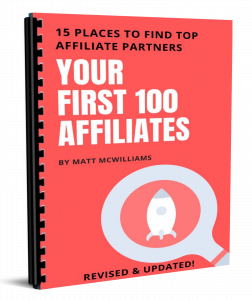 |
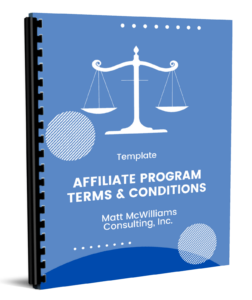 |
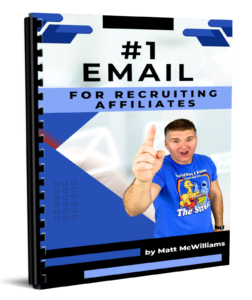 |
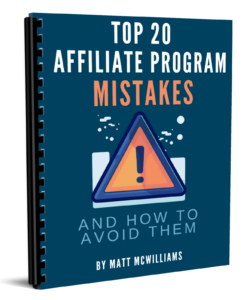 |
 |
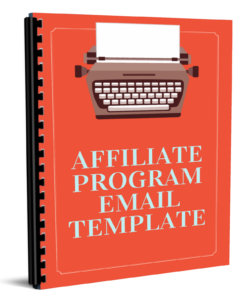 |
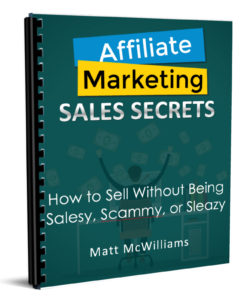 |
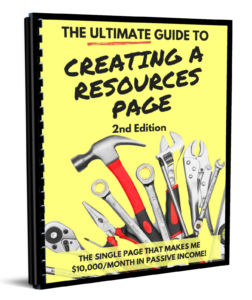 |
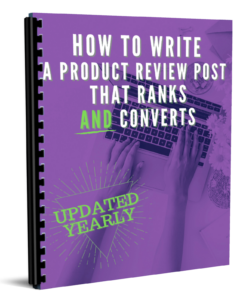 |
